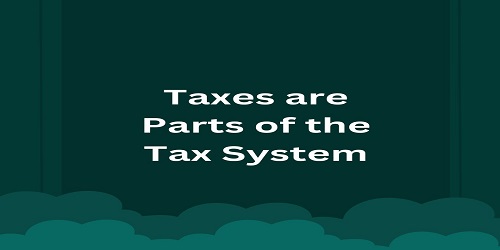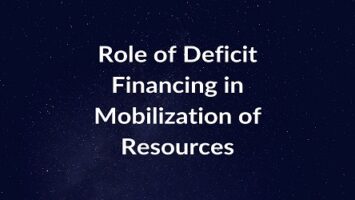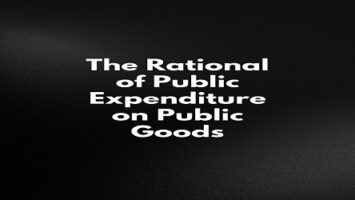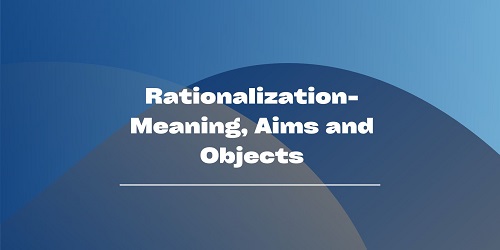Table of Contents
Taxes are Parts of the Tax System:
The taxes of a government or more properly, the taxes of a State, should be viewed as parts of a unified system of taxation rather than a miscellaneous assortment of unrelated taxes. Each tax should be considered with reference to its proper place in the system, with an eye on its advantages and disadvantages as compared with other taxes in the system. A tax by itself may be good or bad, as a part of a system it may be just the reverse as it neutralizes certain bad effects or exaggerates some undesirable consequences of other taxes. A tax may supply the necessary balance in a tax system, or it may disturb the existing balance. It is the problem of the legislator and administrator to construct a harmonious, well-balanced, and unified system of taxation, and this can be accomplished only by weaving the various taxes into the fabric of the tax system to accomplish symmetry and avoid discord.
Progressive income and inheritance taxes may thus be used to place a heavier burden upon the upper-income classes and commodity taxes may be employed to reach the lower-income groups. But the choice of taxes should be in accordance with a well-planned social policy.
Maximum Social Benefit:
Taxation should not be treated as an instrument for raising revenue only, but an instrument for attaining certain social objectives also, such as the redistribution of wealth and thereby reducing inequalities of income. Taxation may be used to finance public services. It can be used to control and regulate consumption, for example, by restriction of alcoholic liquors by means of heavy excise duties. All these measures will increase the social welfare of society. Thus, a good tax system should increase the social welfare of society. Thus, a good tax system should ensure maximum social benefit to society and should not be regarded only as a means of securing revenues.
Just Distribution of Tax Burden:
A good tax system should ensure a just distribution of tax burden. There are three theories on the just distribution of tax burden:
(1) The cost theory- Taxation should be measured by the cost of service rendered to the individual taxpayer by the public authority.
(2) The benefit theory- Taxation should be measured by the benefit to individual tax-payer of such service.
(3) The ability to pay taxation.
The cost of service theory cannot be applied to services paid out of the proceeds of taxes as against price. The cost, as pointed out in the definition of taxes, prices, and fees cannot be the basis of taxation. A tax is a compulsory levy taken from all alike and without any regard to the use of services by the individuals supplied by the government. Thus, the cost of service principle is not practically applicable. Similarly, since the cost of service rendered to individual tax-payer cannot be determined, the benefits cannot also be determined except in a few rare cases, such as old age pensions. The pensioner under the benefit of service principle has to return his whole pension to the treasury. If exceptions or qualifications are to be made, then it is not clear what principle and to what extent such exceptions are to be made. In last, we have to choose the principle of the ability to pay. Though there are difficulties in estimating the ability to pay each tax-payer, yet this principle has been regarded as the best among all for levying taxes. In fact, a good tax system should have minimum aggregate sacrifice and should fall more heavily on the richer sections of the community than on the poor. Hence, a good tax system is based on the principle of progression.
Universal Application of Taxes:
Each individual should pay according to his ability to pay, and the individuals, possessing the same ability to pay, should contribute the same amount by way of taxes. In the Indian tax system, however, the attribute is lacking to some extent, for example, income tax is not universal and uniform in its application in India, as income from agriculture is not taxed to the extent the incomes have been taxed in the non-agriculture sector. This may create dissatisfaction in the heart of those people who are engaged in the non-agriculture sector. It may also result in creating imbalances in the economy. Hence, a good system should ensure the universal and uniform application of taxes to each individual of society without any discrimination.
Revenue should increase with the increase in National Income:
The structure of the tax system should be such that an increasing proportion of the increment to national income gets automatically siphoned off into the State Treasury without any additional text effort on the part of the government. Thus, an amount of land revenue per acre, fixed thirty years back, is far less advantageous than a tax on agricultural Income or capital value of the land.
Similarly, a fixed tax on each shopkeeper is less advantageous than a tax on his net income or total sales. Thus, the revenue of the state should increase with the increase in national income & per capita income, output & consumption.
Tax System should be Balanced:
It implies that a good tax system should not be composed of a single type of tax, but all kinds of taxes should be imposed in a balanced and coordinated way. Direct and indirect taxes, progressive and proportional taxes, should play their role at their proper places, so that desirable revenue and return may be obtained without adversely affecting production and consumption. There are several advantages that direct taxes have over indirect taxes, but direct taxes may not come out successful in taxing the entire economy, and hence, they may not yield sufficient revenue to meet the increasing expenditure of a modern government. Moreover, it is convenient for the taxpayer to pay indirect taxes. Therefore, it is suggested that both direct and indirect taxes should be levied to earn the maximum amount of revenue, and without causing any adverse effect on the economy, i.e., on production and distribution. Similarly, a good tax system cannot rely either on progressive or proportional taxes alone. Both kinds of taxes have their merits and demerits. It is, therefore, essential for a good tax system to take advantage of both kinds of taxes in the interest of the economy and the community as well. Therefore, it is concluded that is a good tax system with under-emphasis not laid on a particular kind of tax; but taxes are imposed in balanced and coordinated manners so as to tap the entire society, without causing any adverse effect upon the level of consumption and production and economic development of the country.
Effect on Production:
A good tax system ensures the rapid economic development of the country. It does not hamper the development of trade and industry. A good tax structure is so framed, that it may mop up the surplus resources from the entire economy without causing any adverse effect on the ability to work, save and invest of the people, directly or indirectly. A good tax system should always promote production, i.e., it should encourage people to work, save and invest. Here, Dalton has rightly pointed out that “the best system of taxation from the economic point of view is that which has the best or the least bad economic effects.”
Effects on Distribution:
The classical’s aim of taxation was that of revenue. Taxation was regarded as a means for raising the funds for the State, which it needs for performing its limited function. But taxation for revenue only is now criticized as a mid-Victorian slogan no longer quite applicable to modern conditions. Taxation, it is said, may be used as an instrument for attaining certain social objectives, for example, as means of removing inequality of income, diverting resources for productive purposes, and thereby increasing the social welfare of the community. Taxes that transfer income from individual governments, might alter the pattern of private consumption and investment, thus may be helpful in raising the level of national income. Therefore, it can be concluded that a good tax system should ensure equitable distribution of incomes and an increase in national income.









Comments (No)